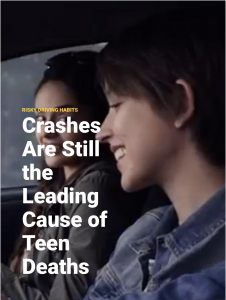Lesson One: Risk Involved in Driving (1.1)
Risk is the possibility of loss or injury. Everything we do involves some risk.  Car crashes are one of the leading causes of death for teens. This makes driving the most dangerous risk for teenagers. Everyday there are thousands of collisions, most are preventable. Drivers are either unaware of the risks, think nothing will happen to them, or ignore the risks altogether. Being motivated to use the tools learned in class to manage risk will reduce the chance of a crash occurring.
Car crashes are one of the leading causes of death for teens. This makes driving the most dangerous risk for teenagers. Everyday there are thousands of collisions, most are preventable. Drivers are either unaware of the risks, think nothing will happen to them, or ignore the risks altogether. Being motivated to use the tools learned in class to manage risk will reduce the chance of a crash occurring.
 Driver-Statistics
Driver-Statistics
Highway Transportation System
The term Highway Transportation System (HTS) refers to the highways and roads we use. The purpose of the HTS is to move people and goods, safely and efficiently, from one place to another. The system consists of people, vehicles, and roadways. All of these can be different types, sizes and in different conditions. We interact with users that are often ignored but are at a high risk of injury due to lack of protection. These are Vulnerable Roadway Users. A Vulnerable Roadway User (VRU) is anyone who is on or alongside the roadway without the protective covering of an automobile.
What are some examples of Vulnerable Roadway Users?


 HTS
HTS
Risks in the HTS
Obtaining a license is a privilege that comes with many responsibilities. Drivers are responsible for operating their vehicle in a manner that is cooperative and courteous. Your thoughts, feelings, opinions, and attitudes can have a positive or negative impact on you and other roadway users. Being aware of your emotions will help ensure that you are in the right mindset to perform the driving task.
Identifying Risks Activity
| Emotion | Positive or Negative? | How Does it Impact You? |
| Overjoyed | ||
| Angry | ||
| Worried | ||
| Bored | ||
| Arrogant |
Describe environmental factors that may impact risk

Describe how a vehicle’s condition can contribute to its risk

Developing Risk Management Driving Habits
A habit is performing an action without thought. Habits are developed by performing an action repeatedly. Developing risk management driving habits requires knowing how and when to perform a maneuver, possessing the correct attitude, and repeating the action correctly every time.
Essential Questions
-
How does your ability to identify risk help you manage it effectively?
-
How can habit development help you manage different types of risk?